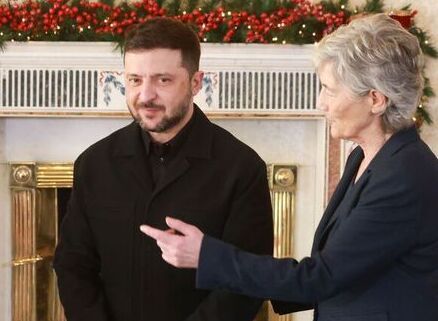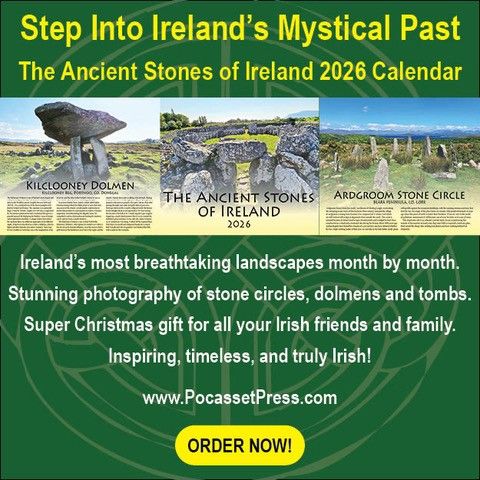. Not only was their religion outlawed, but Irish clergy were on the run with a price on their heads.
The Irish people kept the faith though, and secretly met their outlawed clergy to celebrate Mass in the woods, glens and mountain passes whenever they could.
Because of the oppression, Mass might be celebrated only once a month, or even less. The signal that a Mass was to be held was as simple as a coded phrase like "The bloom is on the furze."
As infrequent as the Mass was, one time that was rarely missed was Mass at Christmas. In spite of the terrible times, Christmas still brought a sense of hope.
A foreign power may have controlled the land, but they could not control the hearts of the Irish who still had their customs, their faith, and their pride, and, by God, they would have their Mass.
One example can be found in a glen near Drogheda where stands a Mass Rock which drew people who, as the story goes, walked barefoot in a freezing stream so that they would not leave footprints in the snow to betray their destination. Christmas Mass was one custom they were not about to surrender.
Some of the other Christmas customs that were practiced, by the way, were older than even Christianity.
Some had originated back at the dawn of recorded Irish history. They included ringing of doorways and "windows" - this was long before glass was invented - with holly and ivy.
That custom came from the ancient Celtic tradition of ringing one's dwelling with those magical leaves since holly and ivy remained green when all other plants died, and were deemed a protective barrier against the killing force of winter.
Although the custom carried into the Christian era, its function was now purely decorative. Nevertheless, the British would marvel at the hope that still burned in hearts they had tried so desperately to subdue and the green-colored manifestation of that hope every Christmas.
The source of that hope, as stated, was the faith. In each community, courageous families would risk fines and imprisonment to attend a Mass in the dark of night, celebrated by one of the outlawed priests.
On occasion, an especially brave household would offer to host the celebration indoors away from the biting winter wind. Naturally, the house to be used was kept secret until just before the Mass was to begin, at which time a lighted candle was placed in the window to signal the faithful.
Once the signal was given, candles were lit in every house window to confuse any who might try to interfere with the celebration.
To the Irish, the meaning of the candle was clear, but to the stranger, it was merely an extension of the pagan custom of holiday decoration.
The lighted candle eventually became part of Christmas custom, and remained long after its need as a signal disappeared.
It also acquired new meanings, such as to symbolically light the way for the holy family on their way to Bethlehem, although such a practice would lead one to believe that the holy family had strayed more than a bit on their journey.
For those who know the original purpose of the Irish Christmas Candle, today's Christmas wreath, with a candle in the center, provides a reminder of the sacrifices made by our ancestors who placed a candle in a holly-encircled window to send out the message the Lord was in this house tonight.








